"Intoxicated by the most addictive drug: power with impunity." —Isabel Allende; In the Midst of Winter, p. 88
We now move to the second nesting doll: the Responsible Jewellery Council.
The Responsible Jewellery Council was founded by 14 companies in 2004, among them Rio Tinto, De Beers, BHP Billiton, Cartier, Newmont Mining, Signet Group, Tiffany & Co, Zales Corp, and Jewelers of America. These companies represent hundreds of billions of dollars of retail and mining interests.
Jewelers of America, founded in 1906, is particularly important—since with over 8,000 members, they are a major trade organization representing mainstream American jewelers—the very audience that Professional Jeweller reaches with their publication.)
As an illustration of the Council’s current influence in the US, consider the upcoming Chicago Responsible Jewelry Conference—which takes place October 19 and 20, 2018.
This is the most significant gathering of the ethical jewelry community in North America today since the 2007 Madison Dialogue.
The keynote speaker is Mark Hanna, Marketing Director of the Richline Group (Berkshire-Hathaway) and member of the Responsible Jewellery Council’s board.
Ethical Metalsmiths, an organization composed of small pioneer jewelers and academics, whose “approach is to raise awareness and activate people who make jewelry to support real change that leads to responsible mining and supply chain transparency,” emailed me an invitation. They are one of the sponsors of the event.
The email stated, “A responsible sourcing industry leader… Mr. Hanna believes in an inclusive path to Jewelry Industry Responsibility that focuses on collaboration of effort between larger corporations and individuals in our field.”
Before the invitation arrived, I had personally had only one correspondence with Hanna, who I had never heard of, and that was on the Ethical Metalsmiths forum—a group list that connects anyone with everyone in the ethical jewelry sourcing community of North America.
Back in June of 2013, a member of the forum suggested that Rio Grande, a major supply house, is offering Responsible Jewelry Council-certified gemstones.
In response, I raised Earthworks Action’s 2013 critique on the Responsible Jewellery Council, More Shine Than Substance.
Here was Hanna’s response:

Hanna is speaking for the Responsible Jewellery Council. So then, here's a question:
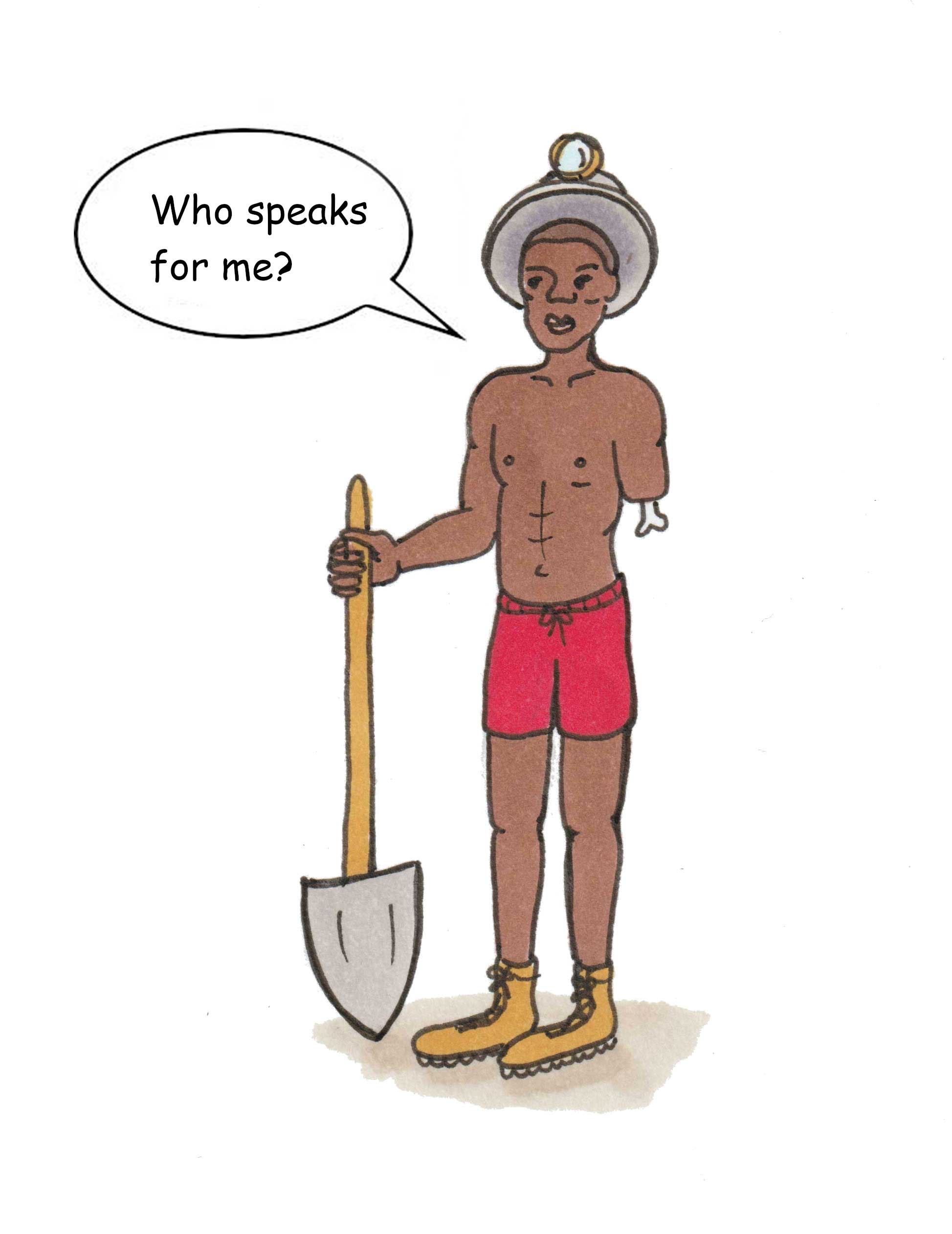
Ethical Metalsmiths was, until 2013, sponsored by Earthworks Action. Now they are closely aligned with the very agents that Earthworks critiques in their study, as I detail extensively in the Third Russian Doll: "A Trade Association".
The branding of the conference’s title, “Responsible Jewelry” accurately conveys Responsible Jewellery Council’s controlling influence over the ethical jewelry space in North America, from small studio jewelers in Ethical Metalsmiths (also a sponsor) to large corporate interests.
The conference is in partnership with Ethical Metalsmiths and Susan Wheeler Designs. Brilliant! Put the small studio and its representatives, who are the most progressive elements of the jewelry sector, out front in a meeting backed by large multinational companies.

Screenshot from the Chicago Responsible Jewellery Conference homepage.
The Responsible Jewellery Council has not only consolidated the small studios, but also has the full support of Brilliant Earth.
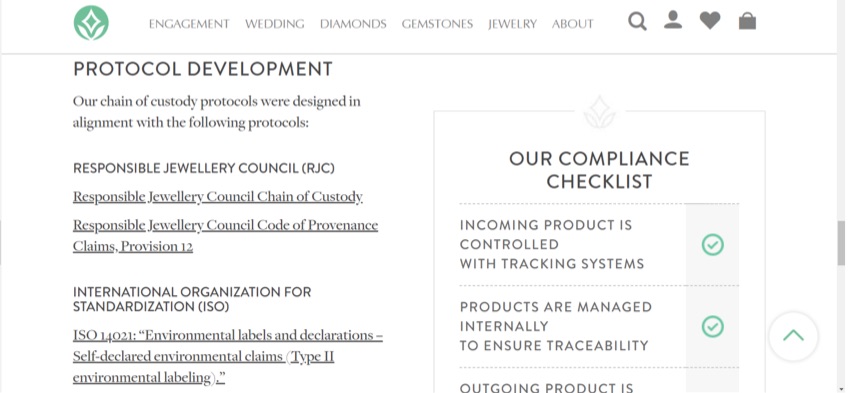
Screenshot of Brilliant Earth’s website from summer 2018.
Brilliant Earth, discussed extensively in the Eighth Russian Doll: Brilliant Earth's Long, Tall Tale, is a global powerhouse that dominates the ethical jewelry narrative in North America.
The Council’s global membership is now over 1,100 strong and has vast support of international agencies, some of whom will be in Chicago at the conference.
The organization has focused on standards development, working with numerous international certification agencies across the globe, including the International Social and Environmental Accreditation and Labeling (ISEAL) and the Organisation for Economic Co-operation and Development (OECD).
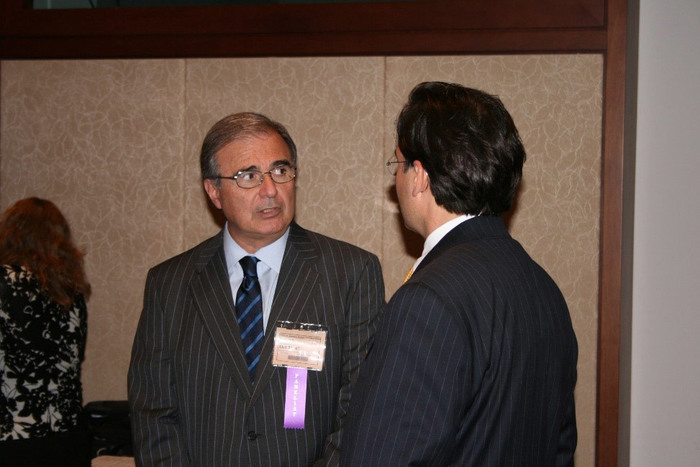
Matt Runci, left, former CEO of Jewelers of America and Chairman of Governance of the Responsible Jewellery Council. Photo by author, taken at the Madison Dialogue, a World Bank meeting, in Oct, 2007. See author’s article on the event.
Check out this promotional video—the soaring, uplifting music extolling the grandeur of the Responsible Jewellery Council stylistically similar to the films of Leni Riefenstahl.
Analysis of the Responsible Jewellery Council ’s Messaging
Even if you are an industry insider, the Council’s website can feel like a labyrinth of intricate and somewhat technical information difficult to access or critique unless you are deeply into technical issues of certification.
We need to go layer by layer. As a point of entry, we can focus on their messaging by interpreting the sliding photos on their homepage.
In January, 2013, the Responsible Jewellery Council’s homepage emphasized their standards setting, events and their International Social and Environmental Accreditation and Labeling membership, a foundation of their platform. They had not so much addressed the issues related to small-scale mining.
There was just one person of color (first screen shot below) pictured in front of a mine. She is an example of “engagement”—meaning, I believe, the Council’s engagement with small-scale mining communities. Here’s the image from their homepage at that time:
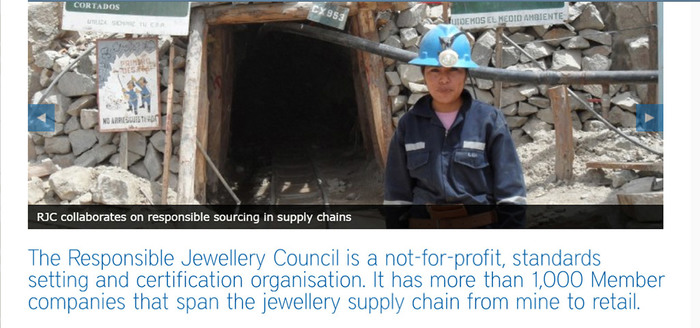
In other words, look at this picture…think about the RESPONSIBLE JEWELRY COUNCIL’s responsible sourcing, and you know you have an advocate for a small-scale miner—this Indigenous person, wearing protective equipment to indicate best practices.
By the end of 2013, however, the Council was well on their way to solidifying their relationship to the small-scale mining sector. In 2011 they signed memorandums of understanding (MOUs) with the Alliance for Responsible Mining (see my 2011 editorial for my concerns about this) and the Diamond Development Initiative). Both organizations focus on small-scale mining issues.
By January, 2014, the homepage changes. Now, here are two images of people of color shown in the photos—the first photo above and this second photo below.
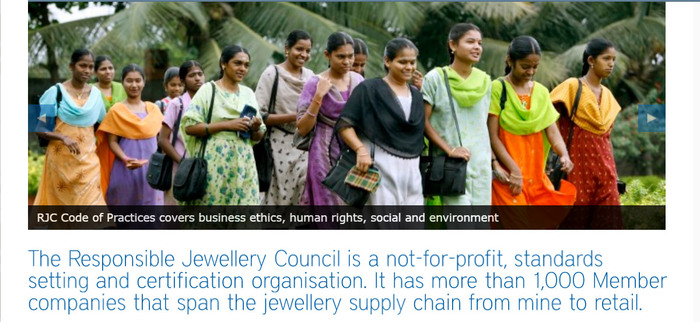
When you think about their business ethics, human rights practices, and environmental stewardship, consider happy women of color—wearing pretty saris and smiling and that nonprofit that is on their side.
And by the fall of 2014, a third photo in this vein was added to the homepage. The website homepage remained the same until very recently, as shown here in this February 2018 capture:
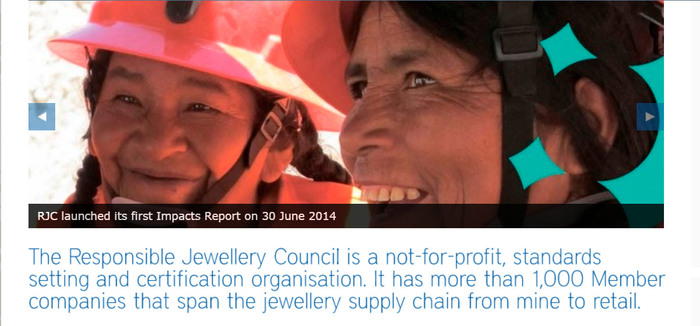
This photo announces the Council’s impact report: when you think of their impact, think about happy smiling Indigenous people wearing new protective gear, representing the best case scenario for the small-scale mining sector.
Someone could look at the photos and think that the Responsible Jewellery Council was really an NGO focused on small-scale mining. Three out of eight photos of people of color…all of them women.
Three out of eight!
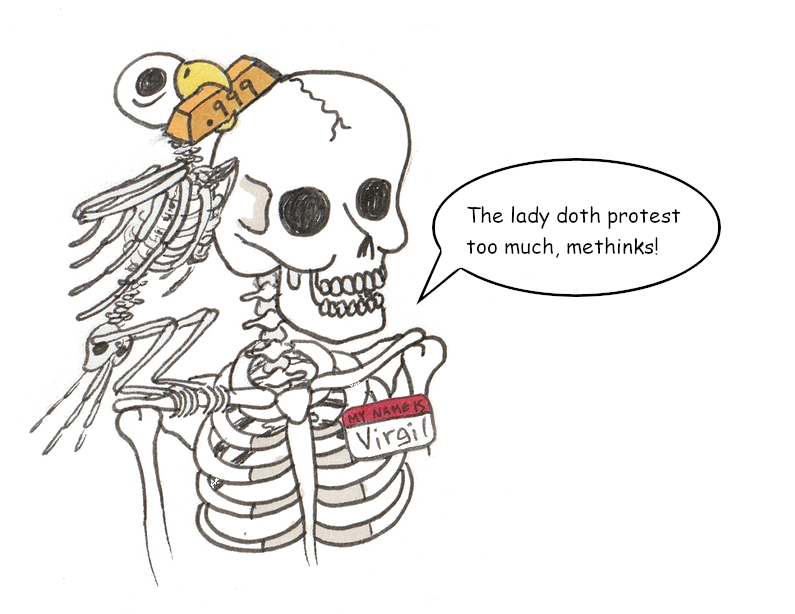
Despite this show of brown-skinned people, precisely ZERO small-scale miners are a part of Council’s decision-making body.
This image, also one of the eight photos, assures the trade that the Council is really not an aid or development organization focusing on people of color:
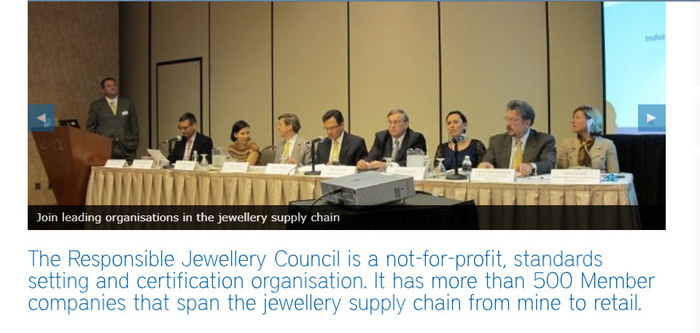
The caption “leading organizations” assures us that it’s the white people in suits who are really in control!
The old-world order is still in place.
The Responsible Jewellery Council’s Home Page Photos Today
These days, we see a great evolution on the Council’s homepage.
The current homepage photo selection is devoid of these three photos of small-scale miners. Showing your concern for those brown-skinned Indigenous is under wraps. (See the Fourth Russian Doll: Responsible Jewellery Council Chain of Custody Scheme).
Gone are the images of small-scale miners. If you were to come to the site fresh, you’d have to explore a bit even to find reference to them.
Also, there are no more white people sitting at the desk deciding what to do to help the brown people.
The real theme, it seems, is help the world and provide jobs in developing countries.
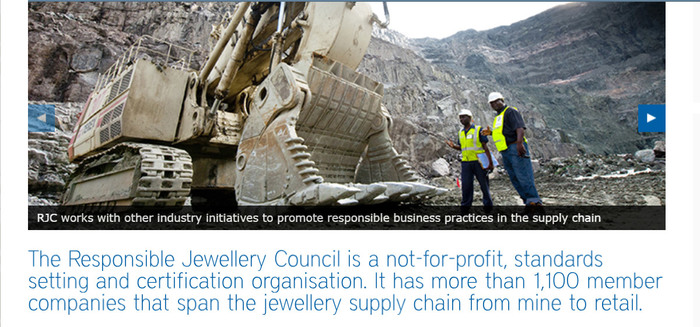
This is the new story of ethical gold: a big hole in the ground paired with black men with skilled jobs.
The black miner next to an earth mover illustrates strong local downstream economy—directly countering the critique that large mining operations exploit resources without providing more than menial jobs. (See my brief article comparing the ethics of large-scale vs. small-scale mining.)
The second photo of non-white people is of happy corporate employees in uniforms, branding their company on their bodies like walking billboards:
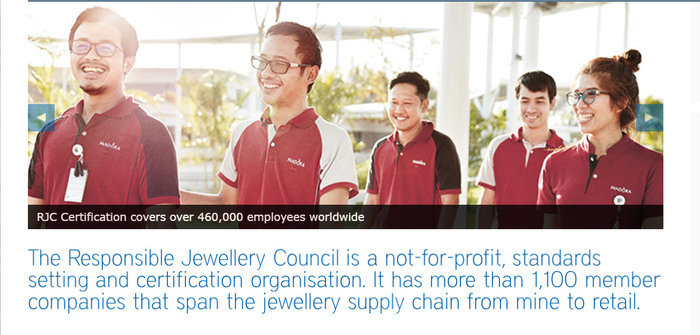
There are other new photos in the current home page sequence which illustrate the incredible scope, power, and influence of this not-for-profit organization.
What is key is that the images of a big hole in the ground—holes that are the source of massive resource curses worldwide, are actually equated with “responsible gold.”
Environmental and human rights atrocities committed by certified Council members are bypassed in this new narrative. In fact, previously-mined materials are actually grandfathered in as part of the new responsible supply chain.
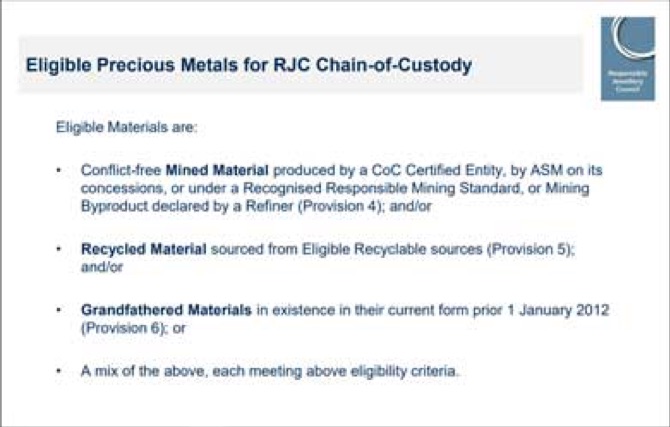
If the photos on the Council’s homepage were to really be representative of Council members’ economic impact on small-scale producers relative to the rest of the Council members’ business, there would only be one photo of an Indigenous person among about five hundred images that more typically look like Council member Rio Tinto’s Bingham Canyon copper mine:
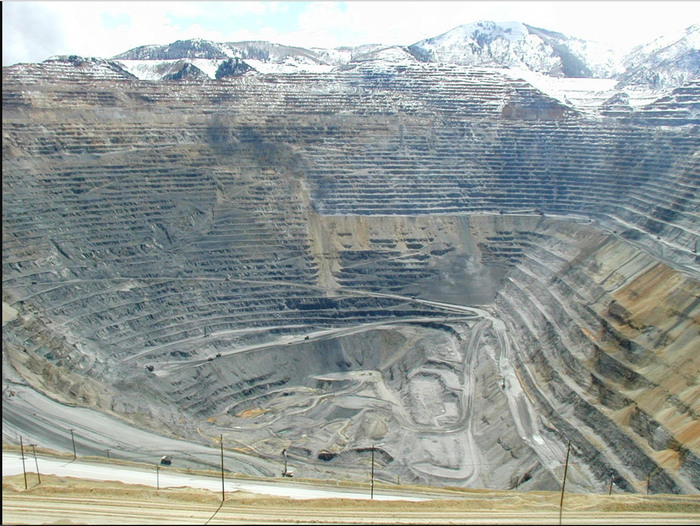
Photo credit: Spencer Musick, Wikimedia Commons.
If the story of Council’s mining members who have achieved certification under their scheme was completely transparent, it would have to address issues like those raised in this video about AngloGold Ashanti.
AngloGold Ashanti was certified under the Council for their “responsible gold” supply chain in 2013—so all materials gained from this mine and others similar are officially grandfathered into the new standard.
The video, highlighting alleged environmental and social atrocities in Ghana by Rio Tinto, nominates this company for the “Public Eye Award” for their action.
Yet even with a critical eye on the photos, it would be very hard, nearly impossible, I think, to understand the complexity of the agenda of the non-profit Responsible Jewellery Council—until you open the next few Russian dolls.
Continue on to the Third Russian Doll: "A Trade Association"
Return to the First Russian Doll: Manufacturing Consent
Return to the Landing Page

**All writing and images are open source, under Creative Commons 3.0. Any reproduction of this material must back link to the landing page, here. For high resolution images for publication, contact us at expose(AT)reflectivejewelry.com.**